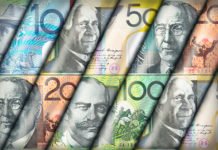Markets
Markets yesterday took a pause after Monday’s risk-off. European equities rebounded 1%+, but major US indices closed little changed. Too little to conclude that a sustained buy-on-dips is still in vogue. Core yields (less than 1 bp higher for German yields, up to 1.2 bps in the US) also suggest ongoing investors caution after Monday’s substantial decline. The dollar showed no clear directional trend either with DXY closing marginally softer at 93.20. EUR/USD finished the day unchanged at 1.1726.
Asian markets this morning are pondering next steps in the Evergrande sage as Chinese markets reopen. The company reached an agreement on a negotiated coupon payment, suggesting some kind of an orderly process going forward. The PBOC also added ample liquidity. Chinese and Japanese markets show modest losses of <1%. The yuan weakens to USD/CNY 6.47. The BOJ kept its short-term policy rate and the target for the 10-y government yields unchanged at -0.1% and 0% and respectively and continues to buy ETFs. The Bank keeps a guarded assessment on the economy. It still sees the economy “picking up as a trend, although remaining in a severe state due to the impact of the pandemic”. Production and exports are affected by supply chain disruptions. The yen weakened after recent strength, with USD/JPY returning to the 109.50 area.
Data will be overshadowed by ongoing fall-out from Evergrande on global sentiment and even more by markets’ positioning ahead of the Fed. Our preferred scenario is for the Fed to announce the start of tapering for October and providing a clear timeframe on the pace of the reduction. A ‘forward start’ in November to reach a broader consensus is an option. Markets will also keep a close eye at the new dot plot. Powell probably will hold the line that there is no direct link between the end of asset purchases and the start of the rate hike cycle. Still, higher inflation forecast might inspire a majority of individual governors to already signal a first rate hike end 2022 and follow-up increases in 2023 and 2024 (2 or 3?). The start of tapering won’t be a surprise for markets. However, concrete action still might cause a further repositioning at the short and middle segment of the curve (2-y, 5-y sector), driven by higher real yields. Even in a bear flattening move, the 1.37% resistance for the 10-y yield might come under test too. The final ‘go’ for policy normalization might support the dollar at least in the short term. EUR/USD 1.1664 is first key reference on the charts, with 1.1603 (Nov 2020 low) the red line in the sand.
News headlines
The Hungarian central bank (MNB) raised its key interest rates by 15 bps, halving the 30 bps steps at the previous three meetings. The base rate now stands at 1.65% and the MNB intends to stick with the hike cycle until the inflation outlook stabilizes around the central bank target in a sustainable manner and inflation risks become evenly balanced. Inflation will remain above 5% for the remainder of the year, start to fall from the beginning of 2022 and return to the tolerance band in Q2 2022. Inflation will than stabilize around the 3% target in H2 2022. Risks remain to the upside. Hungarian GDP will rise between 6.5% and 7% in 2021 and by 5%-6% next year, but the fourth wave of the pandemic increases downside risks and justifies the slower hiking pace. Weekly bond purchases will decrease from HUF 50bn to HUF 40bn in Q4 with a next evaluation in December. The forint initially lost ground as consensus expected a 25 bps rate hike, but the local currency was comforted later by the MNB’s commitment to rein in inflation. EUR/HUF closed below 353 after testing 355 intraday and ending a 3-day losing streak.
The US House of Representatives passed a bill to extend the US debt limit suspension until December next year and to avert a government shutdown on October 1st. In a party-line vote, 220 Democrats voted in favour and 211 Republicans against. The real battle will be in the US Senate because the legislation needs 60 votes to pass, which seems impossible at this stage in the 50-50 split Senate. Republicans see it as an implicit approval of US President Biden’s spending spree and said that Democrats better use special legislation to bypass the necessary 60 votes in Senate.












